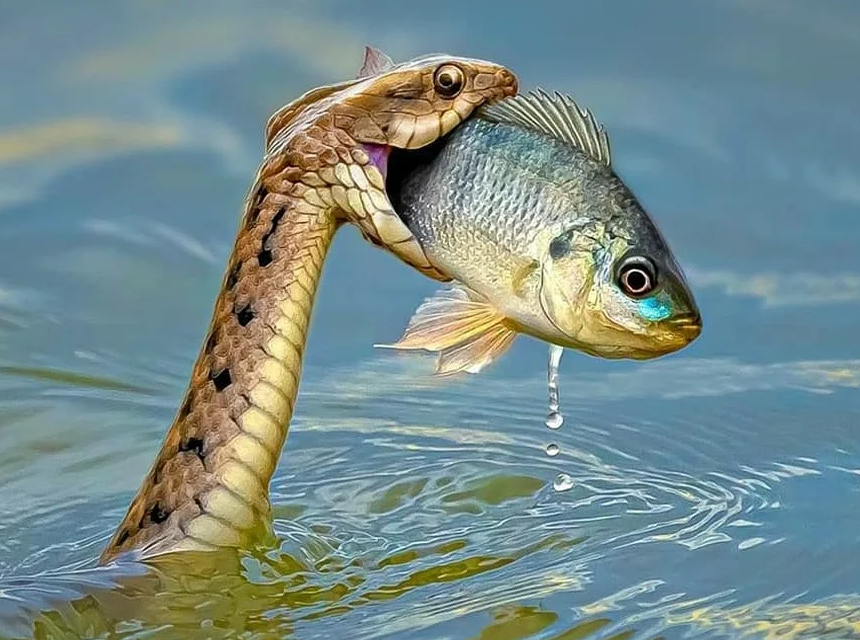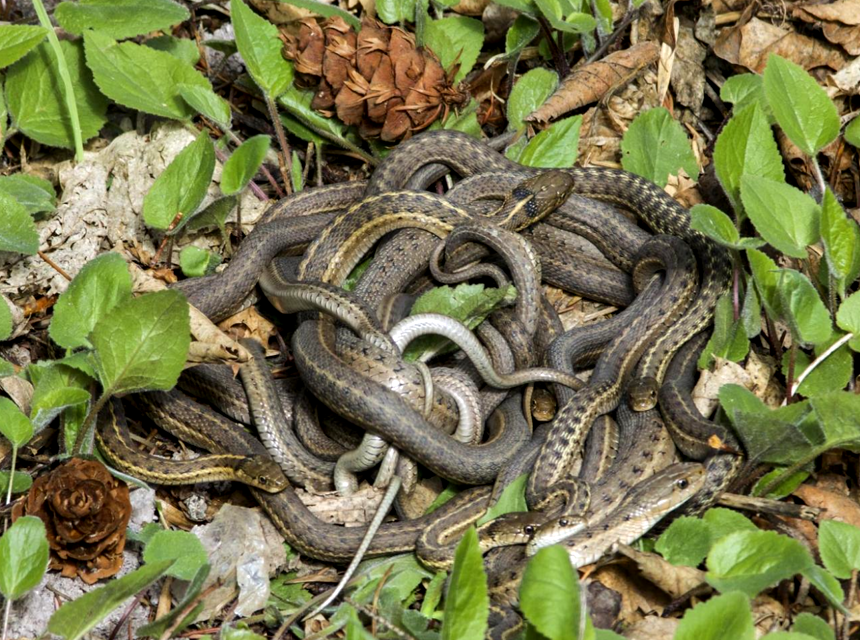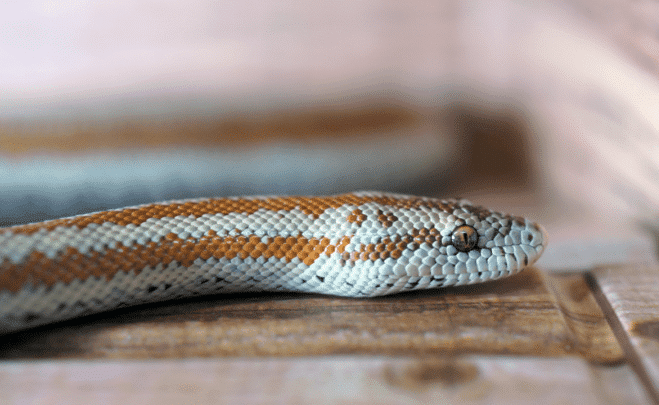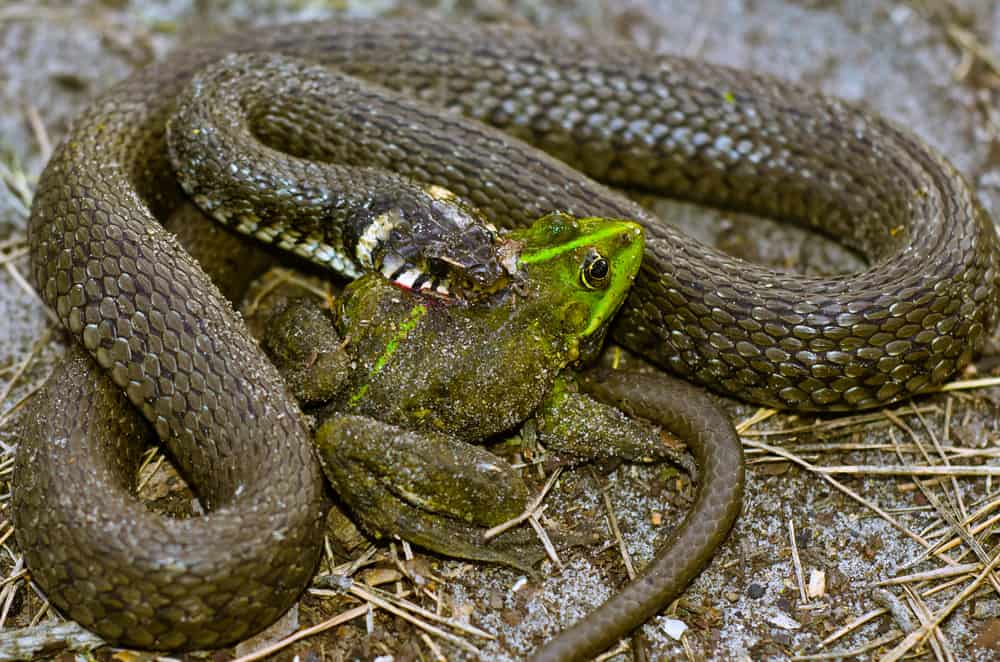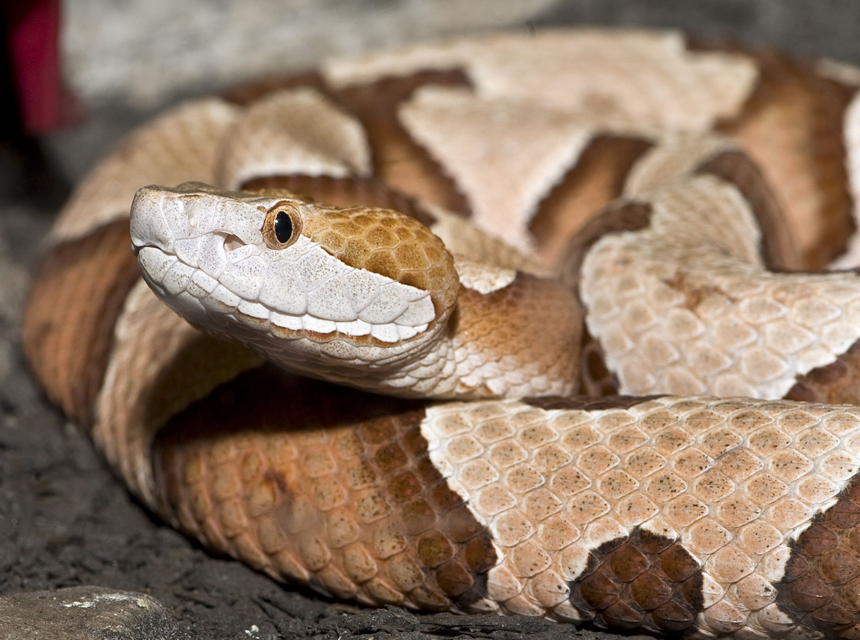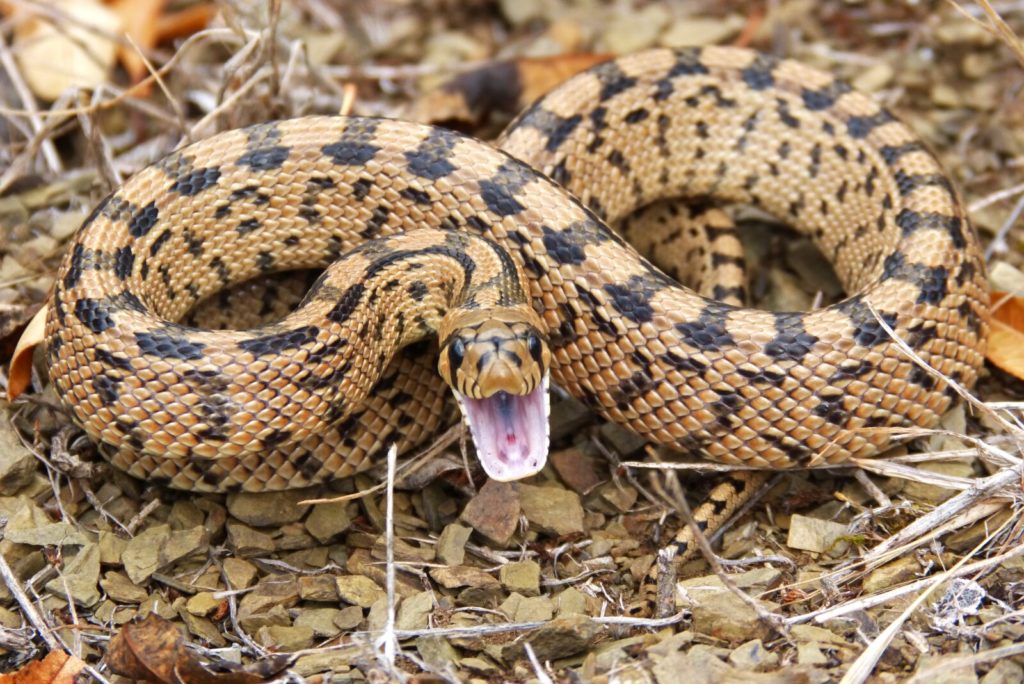

How fast can a snake move? Snakes slither fast, especially when hunting down prey or when they feel threatened, but we can outrun them. The average human running speed is 20 miles per hour and most snakes slither at an average speed of one to three miles per hour. However, snakes such as the Sidewinder can achieve top speed of 18 miles per hour. The speed of snakes differs from one species to another.
We have explained the different moving patterns that snakes make and how they use their muscles and scales to move. We have also reviewed the speed of various species such as the rattlesnake and king cobra. Read on for more.
How fast can a snake move on land? Before we get into that, let’s look at how snakes are able to move without legs.
Snakes utilize muscles and scales to move. They also have refined motor control that allows them to move in different ways and adjust quickly to changes in friction to navigate different surfaces.
Snakes seem to defy gravity as they can move on all kinds of surfaces, including a textured vertical surface, as they can climb walls. That’s the more reason to have Hi-Yield Snake Repellent or another reliable snake repellent in your house. The belly scales serve a similar role to the treads on a tire; to grip onto surfaces and move the snake forward.
A snake has more than 10,000 muscles connected to the ribs attached on its long spine. The muscles push backwards as they alternate between lifting and lowering the scales on the belly to push the snake forward. The scales provide traction as they drag against the ground and the kind of surface can determine how fast a snake can slither or run and the type of movement it will make. For instance, snakes are faster on rough surfaces than on slippery surfaces because it is easier for their belly scales to grip a rough surface.
It is fascinating to watch the fluid movement of a snake and how fast snakes can go despite having no limbs. If you are out in the wild where snakes might be present, you should take precaution with the best snake gaiters that will protect your lower legs from thorns and snake bites.
The following are the different kinds of snake locomotion, and which one a snake chooses to use will depend on its speed as well as the kind of surface it is slithering on.
Also known as serpentine, it is the most common kind of snake movement. The snake contracts and releases dorsal muscles to create momentum sequentially at multiple points along the length of its body to propel itself forward in segments, thus the typical side-to-side motion we are familiar with.
This is a flexible kind of movement that allows some snake species to hunt fish in water and to climb trees. Snakes have fine sensory-motor skills and postural adjustment that enables them to push off of surfaces and deform locally around objects on a surface as each point on its body follows the path created by the head and neck. Most land and water snakes progress in this S-shaped pattern that works well on rough surfaces and it is the fastest way that a black snake can move.
This kind of movement pattern explains how rattle snakes are fast on slippery or unstable surfaces such as mud. It is also used by desert vipers such as Crotalus cerastes and Cerberus rynchops to move on sand. The snake moves by arching its back Trusted Source What Defines Different Modes of Snake Locomotion? - PMC Animals move in diverse ways, as indicated in part by the wide variety of gaits and modes that have been described for vertebrate locomotion. Much variation in the gaits of limbed animals is associated with changing speed, whereas different modes of snake locomotion are often associated with moving on different surfaces. www.ncbi.nlm.nih.gov to lift its trunk off the ground so it slides on the surface from neck to tail without slipping. The regions of static contact result in tracks that look like short separated lines instead of a single connected trail.
Sidewinding is one of the fastest moving patterns of a snake.
The snake pulls up the front and back parts of its body so the mid-body forms a loop and then it straightens the body by thrusting it forward. The locomotion requires little to no momentum but it requires static friction to push against the tunnel sides to prevent the snake from slipping.
Unlike other kinds of snake locomotion that work best on flat, horizontal surfaces, snakes employ this movement pattern when ascending trees or crawling through narrow passages or tunnels because it allows the belly scales to grip strongly onto a vertical surface. It is often used by arboreal snakes to move on tree branches. If a garter snake cannot move fast when stalking potential prey, it might use this movement that keeps it in a striking position most of the time.
Instead of moving side to side, the snake moves in a straight line Trusted Source Whither the slither?, University of Cincinnati UC biologist Bruce Jayne explains how snakes can move in a straight line. magazine.uc.edu . The locomotion mainly utilizes static friction as well as muscle strength. The snake lifts some belly scales that grip the surface so firmly that it pushes the body forwards until it stretches, and then it repeats this cycle.
This movement pattern is also referred to as the caterpillar method because the snake progresses like a caterpillar or inchworm mode because the vertical loop is similar to the looping gait inchworms make when they move.
As we continue with our discussion on how fast snakes can go or run, we must note that this mode of travel is used by snakes that are larger and slower than other snakes. Pythons, boas and vipers use this method to hunt for prey in narrow burrows where there is limited space to contort their bodies. Their ability to move in a straight line also allows them to stay hidden as they relax or stalk prey.
Did you know that some snakes are faster than humans who are jogging? The only way you stand a chance to outrun most, if not all, snakes is to actually run.
How fast can a black snake move? Black mambas are venomous snakes that are the longest in Africa. They are also one of the fastest snakes because they can move at speeds of up to 12 .5 miles per hour, according to the National Geographic Trusted Source Black mamba Black mambas are actually brown in color. They get their name from the blue-black of the inside of their mouths, which they display when threatened. www.nationalgeographic.com .
The Sidewinder is undoubtedly the swiftest snake in the world. It is not only excellent at gliding but it is the only fast snake that can move on land at an impressive speed of up to 18 miles per hour.
In order to understand how to get rid of snakes, you should learn where they live. The southern black racer can achieve high speeds on both land and water. The aptly named and light-bodied snake can run at speeds of up to 10 miles per hour.
How fast can a snake slither? Let’s look at some species of snakes and see how fast they can move on suitable surfaces.
Although corn snakes inhabit rocky areas that may limit their movement, they are relatively fast snakes that can go at a speed of up to 8 miles per hour, especially in summer due to the conducive temperature and high metabolism.
How fast are rattlesnakes? A rattlesnake is not as fast as some snakes that we have featured; it moves at a speed of 2 to 3 miles per hour but it strikes very fast at a speed of 6.5 miles per hour. This is information you should know when shopping for Snake Out Snake Repellent and other products that can effectively get rid of snakes. Rattlesnakes are also lethal because their venomous bites can cause necrosis, wounds and excessive bleeding.
Although their top speed is not clear, garter snakes have slender bodies and they can move quite fast in water.
The gigantic snakes are among the swiftest snake species. In case you are wondering how fast anacondas can move in different environments, well, their top speed is 5 miles per hour on land and 10 miles per hour in water.
How fast is a King Cobra? The highly adaptable snake known to move in water and also climb trees can move rapidly. This kind of snake can slither fast at a speed of up to 12 miles per hour.
You can identify a baby snake by the protrusion on their snout but apart from this egg tooth which falls off soon after birth and the diminutive size, baby snakes resemble their adult species. They become independent early on and feed on insects as well as small amphibians and rodents. We recommend the best rat traps to prevent their prey from attracting them to your house.
Baby snakes are fast and can move at a speed of 4 to 6 miles per hour depending on the species.
Below are answers to some of the questions you could still be having.
Are snakes faster than humans?
Some snakes can move very fast on land or in water but in short bursts. Otherwise, you can outrun most of them because they cannot sustain their pace over long distances.
You can run faster than snakes but you cannot outrun their strike. To put it in perspective, research shows that snakes strike at a lightning speed of 44 to 70 milliseconds.
Some snakes are not venomous but all snakes can bite in self-defense and cause you pain and swelling, and unless you are talking about a pet snake, most of us are scared of them. Snakes live in varied habitats and they move in different manners depending on the surface and the speed at which they are slithering. They have strong muscles and scales that provide traction to move them forward or to help them climb walls and trees.
How fast can a snake move on land or in water? We have included a list of the fastest snakes in the world. Keep in mind that some species such as rattlesnakes strike at a faster speed than they can run.
